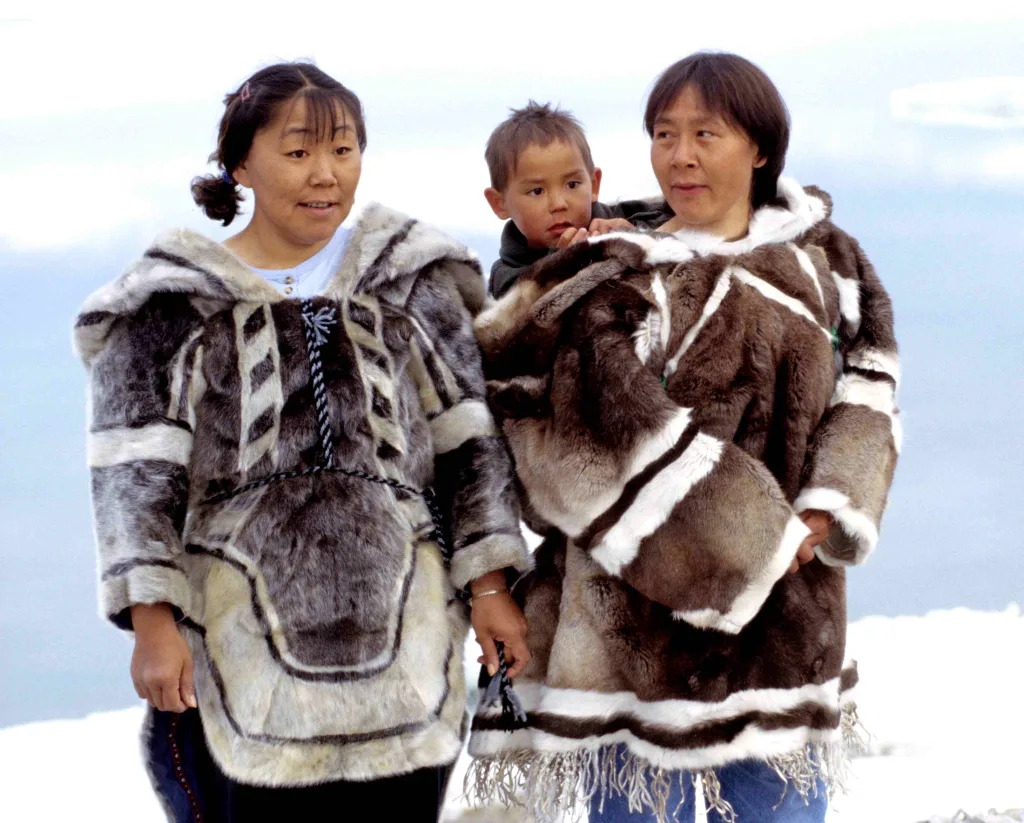The Eskimos, also known as Inuit, are indigenous people who inhabit various regions across the Arctic. They can be found in eastern Russia, Alaska, northern Canada, Greenland, and Denmark. However, it is important to note that the term “Eskimo” is considered outdated and can be seen as derogatory. It is more appropriate to refer to them as Inuit.
In Canada, many Inuit live in 53 communities spread across the northern regions, collectively known as Inuit Nunangat, which translates to “the place where Inuit live.” Inuit Nunangat is divided into four regions: Inuvialuit in the Northwest Territories and Yukon, Nunavik in Northern Quebec, Nunatsiavut in Labrador, and the territory of Nunavut.
Igloos, although no longer the common type of housing used by the Inuit, still hold cultural significance in Arctic communities. They are also practical and serve as emergency shelters for hunters and those in need. Inuit communities have adapted to modern housing, with many living in more conventional houses and buildings.
In northeast Russia, the Siberian Eskimos reside on the shores of the Bering Sea. They have similar cultural practices and ways of life as other Inuit communities, including hunting, fishing, and preserving their language and traditions.
The Inuit population is estimated to be around 160,000 people across Canada, Alaska, Greenland, and Russia. They have a rich cultural heritage and a deep connection to the Arctic environment. While they do not generally inhabit the high Arctic where the North Pole is located, they have thrived in the challenging and unpredictable conditions of the regions they call home.
It is important to recognize and respect the diversity and resilience of the Inuit people. They continue to exist and maintain their unique identities and ways of life in various Arctic regions.
Where Do Eskimos Mostly Live?
The majority of Eskimos, who are more commonly referred to as Inuit, predominantly reside in Canada. Specifically, they inhabit 53 communities spread across the northern regions of the country, which is known as Inuit Nunangat. This term translates to “the place where Inuit live.” Inuit Nunangat is comprised of four distinct regions: Inuvialuit (located in the Northwest Territories and Yukon) and Nunavik (situated in Northern Quebec). These areas serve as the primary home for the Inuit population in Canada.

Do Eskimos Still Live In Igloos?
Eskimos, who are also known as Inuit, do not typically live in igloos anymore. While igloos were historically used as temporary shelters by the Inuit people, modern Inuit communities have transitioned to more permanent housing options, such as houses and apartments, similar to those found in other parts of the world.
However, it is important to note that igloos still hold cultural and practical significance in Arctic communities. They are often used for cultural activities, such as ceremonies and celebrations, to maintain and pass on traditional knowledge and practices. Additionally, some individuals, particularly hunters and those in need of emergency shelter, may still utilize igloos for their practicality and insulation properties in extreme weather conditions.
While igloos are no longer the common type of housing used by the Inuit, they remain culturally significant in Arctic communities and retain practical value for certain purposes.
Do Eskimos Still Exist?
Eskimos still exist, although it is more appropriate to refer to them as Inuits. The Inuit people are indigenous to the Arctic regions of Canada, Alaska, Greenland, and Russia. Specifically, in northeast Russia, Siberian Eskimos reside along the shores of the Bering Sea. The Inuit Circumpolar Council (ICC) represents the interests of these Inuit communities, totaling approximately 160,000 individuals. It is worth noting that the term “Eskimo” is considered outdated and sometimes considered derogatory, so it is best to use the term “Inuit” instead.
Do Eskimos Live In The North Pole?
Eskimos do not generally live in the North Pole. Although Eskimos, also known as Inuit, inhabit various regions in the Arctic, they do not typically reside in the high Arctic where the North Pole is located. The North Pole is known for its harsh and unpredictable environment, which makes it unsuitable for human habitation. Instead, Eskimos are primarily found in areas such as eastern Russia, Alaska, northern Canada, Greenland, and Denmark. These regions offer more manageable conditions for their way of life.
Conclusion
Eskimos, also known as Inuits, continue to live in various regions across the world. The majority of Inuits reside in the northern regions of Canada, specifically in Inuit Nunangat, which consists of four regions: Inuvialuit, Nunavik, Nunatsiavut, and Nunavut. These Inuit communities, totaling about 160,000 people, are spread across 53 different communities. In addition to Canada, Inuit populations can also be found in Alaska, Greenland, and Russia. However, it is important to note that they do not typically inhabit the high Arctic regions, as these areas are too harsh and unpredictable for human habitation. While the traditional igloo housing is no longer common, it still holds cultural and practical significance in some Arctic communities. Therefore, it is more appropriate to refer to these indigenous people as Inuits rather than Eskimos.
